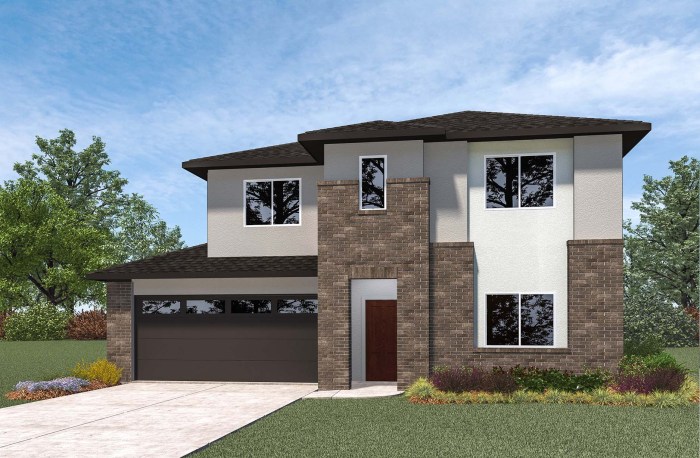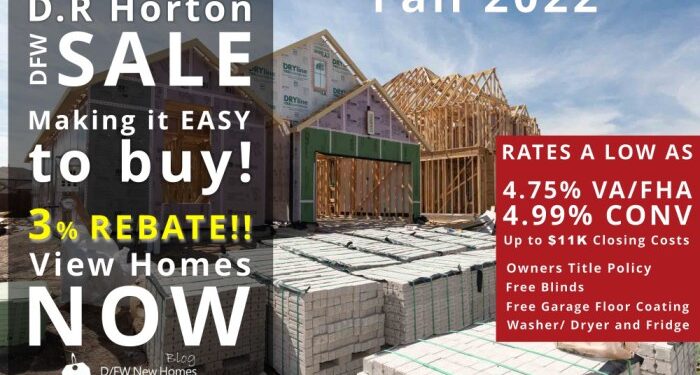Exploring the monthly costs of owning a D.R. Horton Smart Home opens up a world of possibilities. From initial installation expenses to long-term savings, this topic delves into the financial aspects of smart home technology.
Overview of D.R. Horton Smart Homes

D.R. Horton Smart Homes are equipped with cutting-edge technology that enhances the overall living experience for homeowners. These homes are integrated with smart devices and systems that allow for automation, control, and monitoring of various functions within the house.Smart home features include smart thermostats, lighting control, security cameras, doorbell cameras, smart locks, and voice-controlled assistants like Amazon Alexa or Google Home.
These devices work together to create a seamless and efficient living environment.
Benefits of Having a Smart Home System
- Convenience: Smart homes enable homeowners to control various aspects of their home remotely through a smartphone or voice commands. This convenience allows for the customization of settings based on personal preferences.
- Energy Efficiency: Smart thermostats and lighting systems help optimize energy usage, leading to cost savings on utility bills. Homeowners can schedule heating, cooling, and lighting to operate only when needed, reducing unnecessary energy consumption.
- Security: Smart home security systems provide real-time monitoring and alerts for potential intrusions or emergencies. Features like doorbell cameras and smart locks enhance the overall security of the property, giving homeowners peace of mind.
Cost Breakdown of D.R. Horton Smart Homes
When considering the cost of installing smart home features in a D.R. Horton home, it is essential to break down the expenses involved. Let's explore the different components that contribute to the overall cost and any potential discounts, incentives, or financing options available for smart home upgrades.
Initial Cost Breakdown
- Smart Thermostat: A smart thermostat can range from $200 to $300, depending on the brand and features.
- Smart Lighting: Upgrading to smart lighting systems can cost around $50 to $100 per bulb or fixture.
- Smart Security System: Installing a comprehensive smart security system can cost between $300 to $500 or more, depending on the size of the home and features desired.
- Smart Appliances: Upgrading to smart appliances like refrigerators, washers, dryers, etc., can add significant costs, ranging from $500 to $2,000 per appliance.
Discounts, Incentives, and Financing Options
- D.R. Horton may offer promotions or discounts on smart home upgrades as part of their homebuying packages. These discounts can help offset the initial cost of installing smart features.
- Some utility companies offer rebates or incentives for installing energy-efficient smart home devices, which can reduce the overall cost of ownership.
- Financing options such as home improvement loans or including the cost of smart home upgrades in the mortgage can help spread out the expenses over time.
Monthly Expenses Associated with D.R. Horton Smart Homes

Smart homes equipped with various features from D.R. Horton can impact your monthly expenses in several ways. Let's delve into how these expenses may vary based on the smart home features selected and their associated maintenance costs, as well as the influence of energy-efficient features on utility bills.
Variability in Monthly Expenses Based on Smart Home Features
- Smart home features such as security systems, automated lighting, climate control, and energy management can add to the initial cost of the home.
- The more advanced and complex the smart systems, the higher the potential for maintenance costs over time.
- Homeowners may also opt for subscription services for added functionalities like remote monitoring or voice control, contributing to monthly expenses.
Maintenance Costs for Smart Home Systems
- Regular maintenance of smart home devices and systems is crucial to ensure optimal performance and longevity.
- Depending on the complexity of the systems, maintenance costs can include software updates, equipment upgrades, and occasional repairs.
- Homeowners may need to factor in the cost of professional services for troubleshooting or system adjustments, especially for intricate setups.
Impact of Energy-Efficient Features on Utility Bills
- Energy-efficient features like smart thermostats, LED lighting, and solar panels can help lower monthly utility bills by reducing energy consumption.
- Smart home technology allows for better control and optimization of energy usage, resulting in potential savings on heating, cooling, and electricity costs.
- Monitoring energy usage through smart systems can provide insights into where energy is being consumed, enabling homeowners to make informed decisions to further reduce utility expenses.
Comparison with Traditional Homes
When comparing the monthly costs of owning a D.R. Horton Smart Home versus a traditional home, it's important to consider the initial investment in smart home technology and how it impacts long-term expenses.
Long-Term Cost Savings
Smart homes offer the potential for significant long-term cost savings due to their energy-efficient features. These homes are equipped with smart thermostats, LED lighting, and energy-monitoring systems that help reduce utility bills over time. By optimizing energy usage and minimizing waste, homeowners can see a reduction in their monthly expenses compared to traditional homes.
Additional Expenses
While smart homes can lead to savings in the long run, there may be additional expenses associated with owning this technology. Maintenance and repairs of smart devices and systems can incur costs that homeowners need to consider. Upgrades to software or hardware may also be necessary to ensure the smart home functions effectively, adding to the overall expenses of owning a D.R.
Horton Smart Home.
Ending Remarks

In conclusion, understanding the monthly expenses associated with a D.R. Horton Smart Home provides valuable insights for potential homeowners. The blend of convenience, security, and cost efficiency makes this investment worthwhile in the long run.
Frequently Asked Questions
What are the typical maintenance costs for smart home systems?
Maintenance costs can vary but generally include regular servicing of smart devices, software updates, and occasional repairs.
Are there any financing options available for smart home upgrades in D.R. Horton homes?
Yes, D.R. Horton may offer financing options or packages for homeowners looking to upgrade to smart home features.
How do monthly expenses for smart home features impact utility bills?
Energy-efficient features in smart homes can lead to lower monthly utility bills compared to traditional homes.



